-
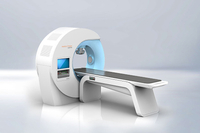 Medical EquipmentIn the field of medical equipment, the application of bearings alsoplays a vital role. They are essential to ensure the high precision,efficient performance and long-term stable operation of theequipment. With the continuous advancement of medical tech-nology and the increasing performance requirements for medicalequipment, the demand for bearings is also constantly developingtowards high precision, high reliability and specific functionality.
Medical EquipmentIn the field of medical equipment, the application of bearings alsoplays a vital role. They are essential to ensure the high precision,efficient performance and long-term stable operation of theequipment. With the continuous advancement of medical tech-nology and the increasing performance requirements for medicalequipment, the demand for bearings is also constantly developingtowards high precision, high reliability and specific functionality. -
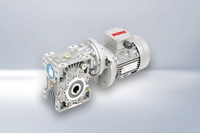 Harmonic Reducer
Harmonic ReducerAs a high-precision, high-efficiency transmission device, harmonic
reducer is widely used in robotics, aerospace, precision machining
and other fields. In the harmonic reducer, the role of the bearing is
crucial. It not only ensures the precise positioning and smooth
operation of the internal moving parts of the reducer, but also dire-
ctly affects the transmission efficiency, service life and overall reli-
ability of the system.
-
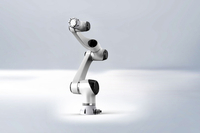 Mechanical Arms And Industrial Robots
Mechanical Arms And Industrial RobotsAs supporting and guiding moving parts of mechanical arms and
robots, bearings bear forces and torques in various directions,
ensuring the stability and accuracy of the equipment. In a robotic
arm, bearings are used to connect various joints, allowing the
robotic arm to move and position flexibly. High-quality bearings
can reduce friction and improve the smoothness and accuracy of
movement, thereby improving the efficiency and accuracy of the
robotic arm. Industrial robots also rely on bearings to achieve
var-ious movements and operations. For example, spherical bear-
ings are used to connect the various joints of a robot, allowing it
to perform multi-axis motion. At the same time, tool end bearings
are used to support and fix robot end effectors, such as fixtures,
welding guns, etc. Ensure its stability and accuracy during work.
-
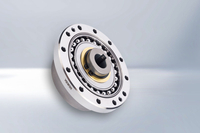 RV Reducer
RV ReducerWith the rapid development of industrial automation and intelligent
manufacturing, RV reducers have been widely used in robot arms,
precision positioning systems and various automation equipment
due to their high precision and high rigidity. The performance of
the RV reducer directly affects the operating efficiency, accuracy
and stability of the entire system. In this context, bearings are a
key component of RV reducers, and their performance has a dec-
isive impact on the overall performance of the reducer.
-
 Fitness EquipmentBearings in fitness equipment ensure the smoothness andprecision of the equipment's movement. For example, inaerobic exercise equipment such as treadmills, spinningbikes, rowing machines, etc., the use of bearings reducesmovement resistance and makes the equipment run smoo-ther. It also reduces noise and enhances durability. In stre-ngth training equipment, such as dumbbell racks, pull-upracks and multi-functional fitness equipment, bearingsensure the stable transfer of weight and the smooth move-ment of moving parts, making users safer and more effec-tive when performing strength training. By using high-qualitybearings in key parts, fitness equipment can provide smoo-ther motion trajectories, reduce maintenance needs, extendservice life, and provide users with a better exercise enviro-nment and experience.
Fitness EquipmentBearings in fitness equipment ensure the smoothness andprecision of the equipment's movement. For example, inaerobic exercise equipment such as treadmills, spinningbikes, rowing machines, etc., the use of bearings reducesmovement resistance and makes the equipment run smoo-ther. It also reduces noise and enhances durability. In stre-ngth training equipment, such as dumbbell racks, pull-upracks and multi-functional fitness equipment, bearingsensure the stable transfer of weight and the smooth move-ment of moving parts, making users safer and more effec-tive when performing strength training. By using high-qualitybearings in key parts, fitness equipment can provide smoo-ther motion trajectories, reduce maintenance needs, extendservice life, and provide users with a better exercise enviro-nment and experience. -
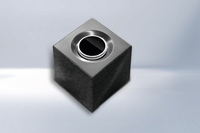 SpeakersGo beyond industry, high end speakers are adopting bearingsas the volume control element and the bearings also bringelegant design to the product. Unlike using the bearings inmachinery, using the bearings in a professional audio prod-uct requires the bearings to operate very quietly and smoo-thly sono vibration and unnecessary noise occurs duringspeaker playback. Lanzer has successfully developed thespeaker bearings in 2019 and has been producing hundre-ds of thousands of speaker bearings every year. Speakerbearings made by Lanzer have now been widely used inhigh end speakers and have achieved outstanding perfor-mances on the market, it is also making Lanzer bearingsunique and innovative in the industry.
SpeakersGo beyond industry, high end speakers are adopting bearingsas the volume control element and the bearings also bringelegant design to the product. Unlike using the bearings inmachinery, using the bearings in a professional audio prod-uct requires the bearings to operate very quietly and smoo-thly sono vibration and unnecessary noise occurs duringspeaker playback. Lanzer has successfully developed thespeaker bearings in 2019 and has been producing hundre-ds of thousands of speaker bearings every year. Speakerbearings made by Lanzer have now been widely used inhigh end speakers and have achieved outstanding perfor-mances on the market, it is also making Lanzer bearingsunique and innovative in the industry.













